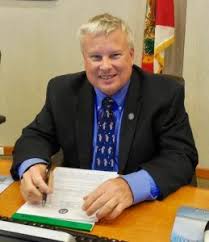Dale Martin
City Manager
June 4, 2021

As the calendar flips into June, budget preparation efforts for the next fiscal year (October 1, 2021) ramp up. Preliminary discussions with department directors have occurred throughout the month of May, and the process of consolidating the departmental budgets into a comprehensive document will begin. As the draft budget takes shape, meetings with each City Commissioner later this month will provide further guidance.
It is significant to note that the proposed budget, when completed, is simply my proposed budget, developed with the guidance offered by previously adopted City Commission goals and with the assistance of City staff. Once my proposed budget is presented to the City Commission and the community at the end of July, it becomes the City Commission’s budget to review, revise, and adopt at their discretion. Several budget workshops and at least two formal public hearings are scheduled as part of the budget process.
Shortly after being presented with the proposed budget, the City Commission with then set the maximum millage rate to be utilized for the final budget. Once the maximum millage rate is established, the City Commission has the latitude to implement a lower millage rate, but it is significantly more difficult to exceed the maximum millage rate (and to the best of my knowledge, has never occurred in Fernandina Beach).
After setting the maximum millage rate, City staff provides that figure to the Nassau County Property Appraiser. When all taxing agencies have shared their maximum millage rates with the Property Appraiser, the Property Appraiser can prepare and distribute a Truth in Millage (TRIM) statement to each property owner. The TRIM statements illustrate what the tax levies (maximum) for each taxing entity would be on the subject property. Another key component included on the TRIM statement is the notification of the formal public hearings for each entity: date, time, and place. Property owners should receive their TRIM statements by August.
The terminology and figures associated with the budget process can be complicated and confusing to many people. Terms such as “rollback rate” and “millage” and “taxable value” are not used in common language on a daily basis by most area residents. Since it is typically unfamiliar (and discussed pretty much only during the budget process), I’ll offer some explanations (recognizing that, as with many things, exceptions to the general concepts are possible).
The millage rate is also referred to as the tax levy. One “mill” represents one dollar for every one thousand dollars of value of a subject property. At the current millage rate of 5.4683 mills, this means that the tax burden on each property is $5.4683 per thousand dollars of taxable value.
To understand more, I recommend that you visit the Nassau County Property Appraiser’s web site, specifically the GIS Tax Map (https://maps.nassauflpa.com/portal/apps/sites/#/data). On this map, you can review property information (which is public information accessible to everyone) for every parcel in Nassau County. You can search the GIS Tax Map by owner name, parcel number, or address or simply click on a subject parcel on the map. Once you have selected a specific parcel, information associated with that parcel will be viewable, including a button for “TRIM Notice” (likely in the lower left portion of the screen). By clicking on the TRIM Notice button, you will then be able to view last year’s TRIM Notice associated with the subject property. For the purpose of this discussion (and future taxation discussions), I will use the information related to my home (2404 Los Robles, Fernandina Beach, if you wish to follow) or you can access your own TRIM Notice for a personal review of your own property.
The TRIM Notice has many boxes, columns, and numbers. The foundation for most of the numbers in the three primary columns is based upon the figures at the bottom of the page in boxes labeled Market Value, Assessed Value, Exemptions, and Taxable Value.
The Market Value is what the Nassau County Property Appraiser has determined to be a market price for your property. This figure can rise or fall (with minimal constraints) based upon market factors as determined by the Property Appraiser. The Assessed Value, although generally and originally linked (but not always) to the sale price, is significantly constrained by the State’s Save Our Home provisions of the State Constitution: this number can only increase by the rate of inflation (as set statewide by State officials) or three percent, whichever is less. To illustrate the difference between the Market Value and the Assessed Value, my 2020 TRIM Notice shows a Market Value (for the Municipality) of $344,277 and an Assessed Value of $309,066: the Assessed Value typically lags behind due to the Save Our Homes inflationary cap.
I’ll continue this discussion next week to describe the other components of the TRIM Notice. Budget discussions can be tedious, but the budget is the vital annual planning document for the City. Thank you for your patience.

I believe the SOH cap only applies to properties with a homestead exemption. The CPI rate for 2020 was 1.4% – a major decline from 2.3% in 2019. As Dale noted, when a property is sold a new assessed value can be established which is often a bit below the sales (market) price.